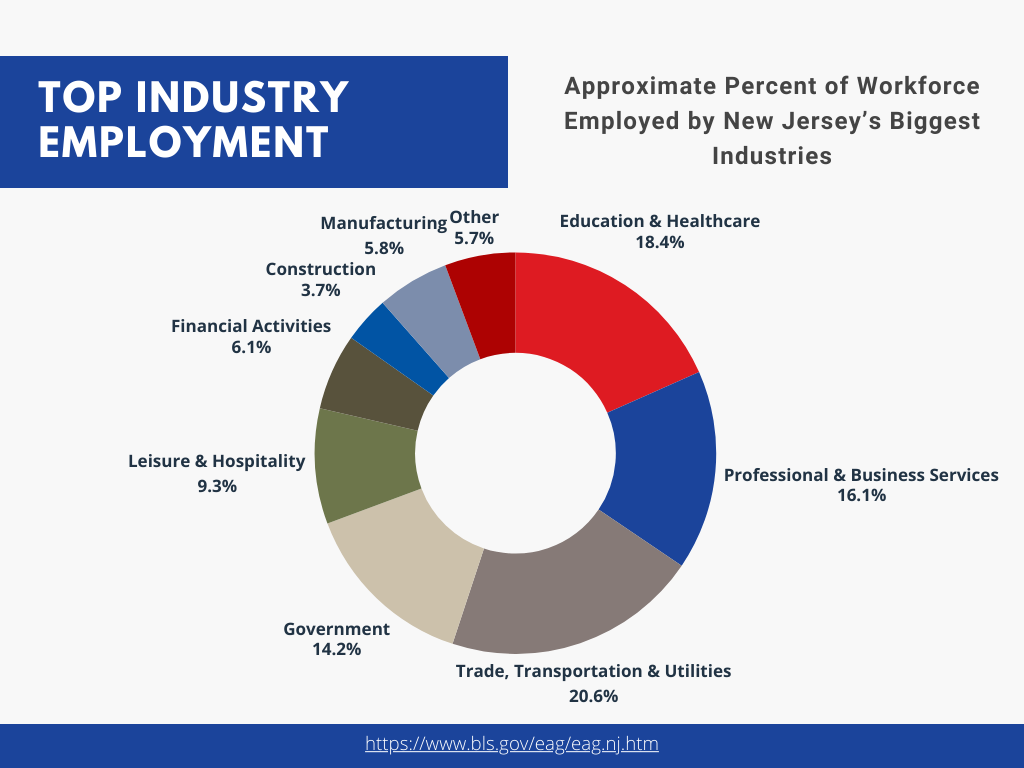In April 2025, New Jersey’s labor market presented a complex picture: while the state added 4,800 jobs, the unemployment rate rose to 4.8%, its highest point in over three years. This uptick, though modest, marks a notable shift from the previous month’s steady rate of 4.7%. The state now boasts a seasonally adjusted total nonfarm employment of 4,398,300 jobs, a testament to its resilient workforce.

Sector-Specific Employment Trends
The private sector was the primary driver of job growth, contributing approximately 75% of the new positions. Education and health services led the gains with an increase of 7,100 jobs, reflecting the ongoing demand in these critical sectors. Other sectors that saw positive movement include financial activities (+1,600), manufacturing (+900), information (+300), and other services (+200).
Conversely, several industries experienced declines:
- Leisure and Hospitality: Down by 2,800 jobs, possibly due to seasonal fluctuations or reduced consumer spending.
- Professional and Business Services: A decrease of 1,900 positions, indicating potential slowdowns in consulting, legal, and administrative services.
- Trade, Transportation, and Utilities: Lost 1,100 jobs, which could be attributed to disruptions in supply chains or shifts in consumer behavior.
- Construction: A reduction of 800 jobs, possibly linked to project delays or seasonal construction lulls.
The public sector added 1,200 jobs, suggesting stable government employment levels.

Year-Over-Year Employment Overview
Looking at the past 12 months, New Jersey has seen a net increase of 36,000 nonfarm jobs. Private sector industries accounted for 76% of these gains. Education and health services experienced the most significant growth, adding 41,300 jobs. Other sectors with notable gains include other services (+2,500), financial activities (+1,700), and manufacturing (+700).
However, some industries faced challenges:
- Leisure and Hospitality: A decline of 4,800 jobs, possibly due to reduced tourism or changing consumer preferences.
- Information: Lost 4,400 positions, which could be related to technological advancements or industry consolidations.
- Professional and Business Services: A decrease of 3,900 jobs, potentially indicating a slowdown in demand for specialized services.
- Construction: A reduction of 3,300 jobs, possibly due to project delays or seasonal factors.
- Trade, Transportation, and Utilities: Lost 2,400 positions, which might be linked to shifts in global trade patterns or domestic consumption.
The public sector saw a gain of 8,600 jobs over the past year, highlighting the importance of government employment in the state’s economy.
Understanding the Unemployment Rate Dynamics
The rise in the unemployment rate, despite job growth, can be attributed to several factors. An increase in the number of individuals actively seeking employment can elevate the unemployment rate, even when job opportunities are expanding. Additionally, the labor force participation rate, which measures the percentage of working-age individuals employed or actively seeking work, plays a crucial role in these dynamics.
New Jersey’s labor force participation rate has experienced fluctuations, with recent data indicating a slight decline. This trend suggests that while more individuals are entering the job market, the overall proportion of the working-age population engaged in employment or job search activities remains variable.
Looking Ahead
As New Jersey moves into the second quarter of 2025, the labor market’s trajectory will depend on various factors, including economic policies, industry developments, and consumer behavior. Continued investment in high-growth sectors such as technology, healthcare, and renewable energy may provide opportunities to offset challenges faced by other industries.
For residents and job seekers, staying informed about industry trends and workforce development initiatives is essential. Engaging with local employment resources and considering upskilling opportunities can enhance employability and adaptability in a changing job market.
For more insights into New Jersey’s employment landscape and resources for job seekers, visit Explore New Jersey’s Employment and Workforce Development section.
Sources











